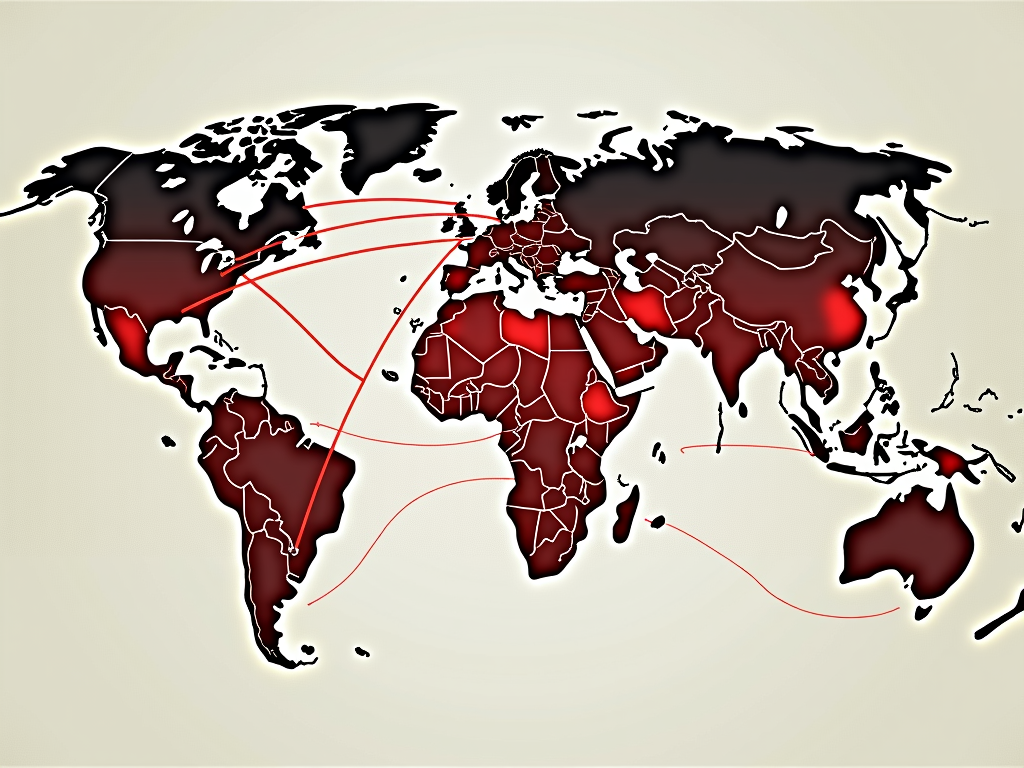Supply chains are the invisible backbone of modern businesses, and when they falter, the consequences can be devastating. Geopolitical instability and cyberattacks are two of the major threats jeopardizing the efficiency and profitability of these complex networks. This article highlights how geopolitical tensions and digital attacks influence the structure of supply chains and what it means for investors and companies. Each chapter provides insight into these challenges and how they shape the financial landscape.
Geopolitical Turbulence: The Effects on Company Value and Supply Chains

The current global economy is marked by increasing geopolitical uncertainty that severely threatens the stability of global supply chains. This instability is fueled by a variety of factors, including enduring tensions between major trading nations, fragmented international relations, and protectionist measures by influential actors.
The rivalry between the United States and China, which has lasted for years, is at the heart of these geopolitical shifts. Trade wars and economic tensions directly impact companies, with rising tariffs increasing the costs of raw materials and products. These higher costs noticeably reduce the profit margins of companies worldwide. For example, increasingly restrictive trade conditions not only affect the bilateral relationships of the involved countries but also global supply chains, as companies are forced to find alternative, often more expensive, sources of supply.
In addition to these bilateral tensions, we are witnessing a geopolitical fragmentation that manifests as a bloc. Countries are realigning based on interests and forming economic alliances that do not always correspond to traditional trade structures. This reconfiguration of the international trade environment forces companies to reassess their strategies and respond flexibly to changes. Businesses that have failed to diversify their supplier base find themselves particularly vulnerable to supply disruptions.
Adding to this is the protectionist trade policy, particularly of the United States, characterized by tariffs and economic barriers. Such measures often provoke a reaction from the involved trading partners, which manifests in their own trade barriers. This often leads to a global trade war and carries the risk of widespread recession. Rising prices due to tariffs and imported goods translate, in the medium term, into rising inflation, which undermines consumers’ purchasing power and severely impacts corporate profits.
The future of global trade remains uncertain, with the potential for further escalation of political tensions. Companies face the challenge of developing new strategies that ensure both the security of supply chains and economic stability. This is a major test for the crisis management of the global economy. Whether there will be a de-escalation or whether geopolitical instability will worsen further, the business world will continue to be challenged.
Cyberattacks: The Hidden Risk in Global Supply Chains

Cyberattacks have become one of the biggest threats to the stability and reliability of global supply chains. At the center of this problem are often inadequately protected IT infrastructures of smaller suppliers, which can serve as entry points for attacks on large corporations. While large corporations invest substantial resources in securing their systems, smaller partners in the supply chain often lack the financial means and technical expertise needed to ensure comparable security standards. Attackers deliberately target these vulnerabilities to access sensitive data and networks.
The Dynamics of Modern Technical Attacks
In a complex supply chain structure, trust and access permissions pose additional challenges. Companies often grant partners broad access to their IT systems without conducting adequate security verifications. However, these trust-based systems can lead to significant disruptions in the event of security vulnerabilities. The complexity and lack of transparency in branched supply networks also make it difficult to achieve consistently high security standards.
Prominent examples such as the 2020 SolarWinds attack, which impacted thousands of businesses globally, or the 2017 NotPetya attack, which caused global damages in billions of dollars, highlight the enormous risks involved. These attacks demonstrate that both direct assaults on companies and indirect attacks through their suppliers can have devastating consequences.
Prevention Measures and Future Planning
To counter this growing risk, companies should establish clear minimum standards for the IT security of their partners and regularly conduct audits and penetration tests to identify vulnerabilities early. Introducing a Zero-Trust strategy, which minimizes access and includes continuous monitoring, provides additional protection.
Implementing incident response plans ensures operational continuity even in the event of attacks on suppliers and enables companies to remain agile. Today, companies must adopt a proactive and strategic approach to fully integrate their supply chains into IT security strategies. Only in this way can they be prepared for the invisible threats posed by cyberattacks and ensure the continuity and stability of their supply processes.